Abstract
In this case analysis deception or lying to a dying patient is discussed within the context of different relationships: the relationship between the patient and her family doctor, the relationship between the patient and the surgeon and the relationship between the patient and her family. It is suggested that the principle of veracity is not only a core feature in the patient-doctor relationship but is also fundamentally connected with the basic element of trust between the patient and doctor. The surgeon, in deceiving the patient, even at the request of her husband, betrayed her trust in violating the principle of veracity. The primary responsibility of the surgeon was towards his patient rather than her family. In lying to his patient the surgeon failed to give Mrs Fasper something she needed most: respect for her as a person.
Full text
PDF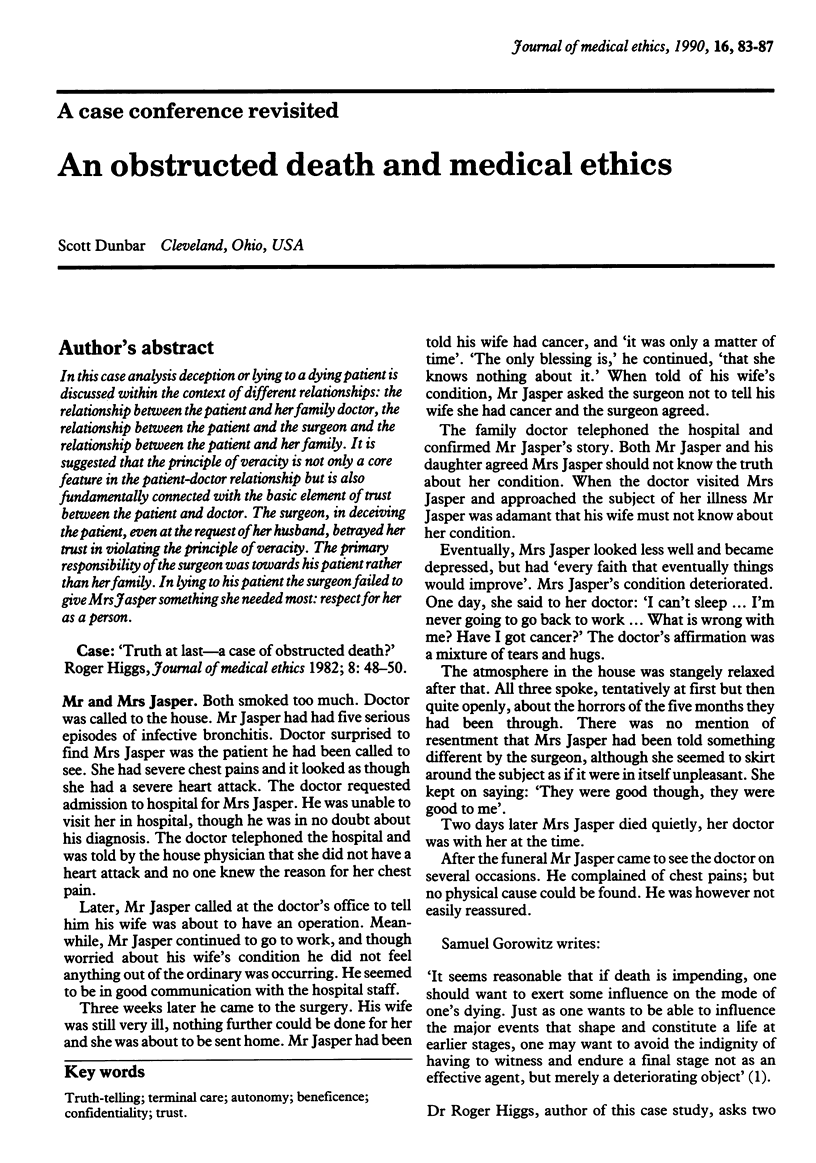
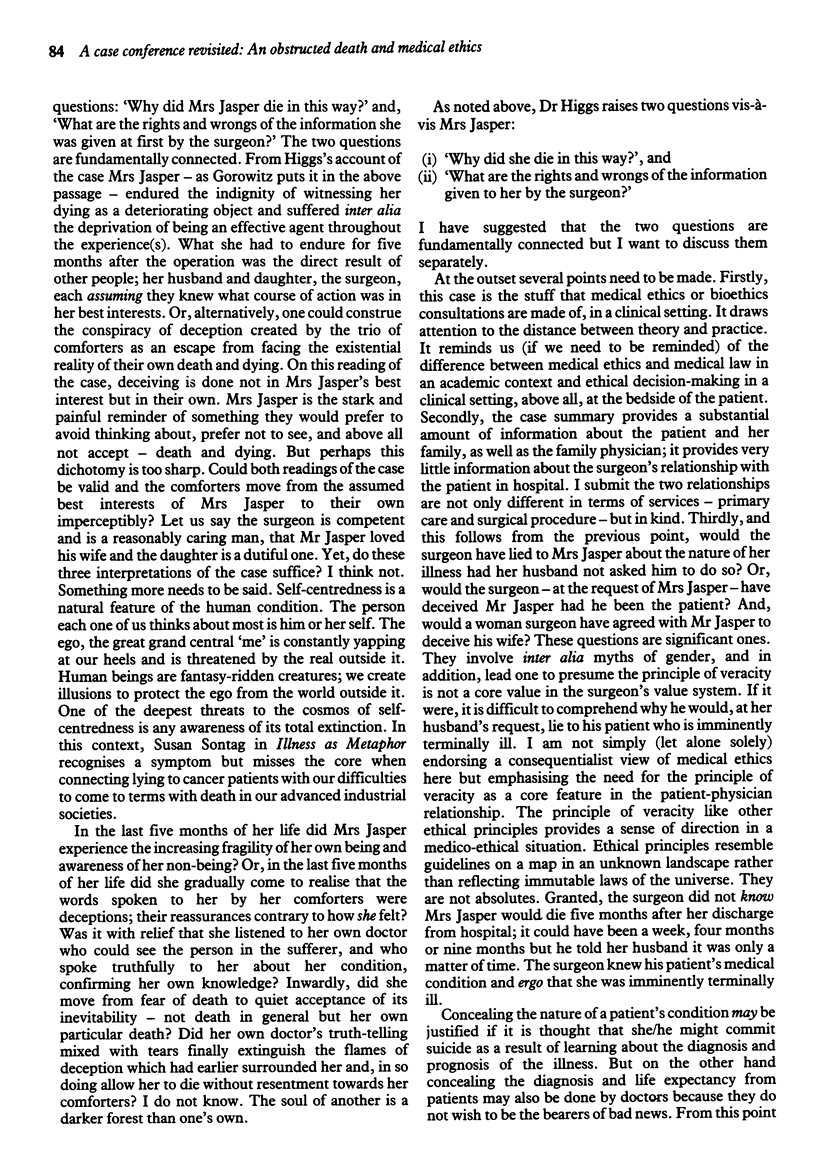
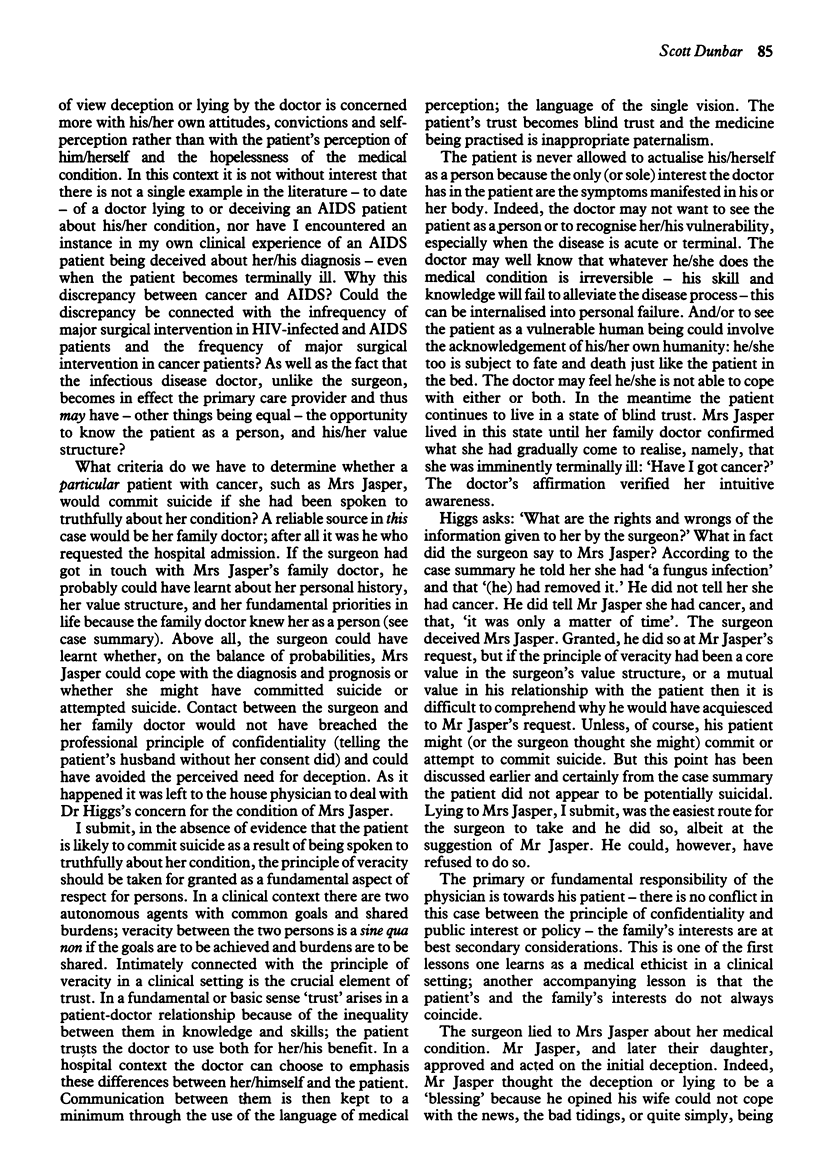
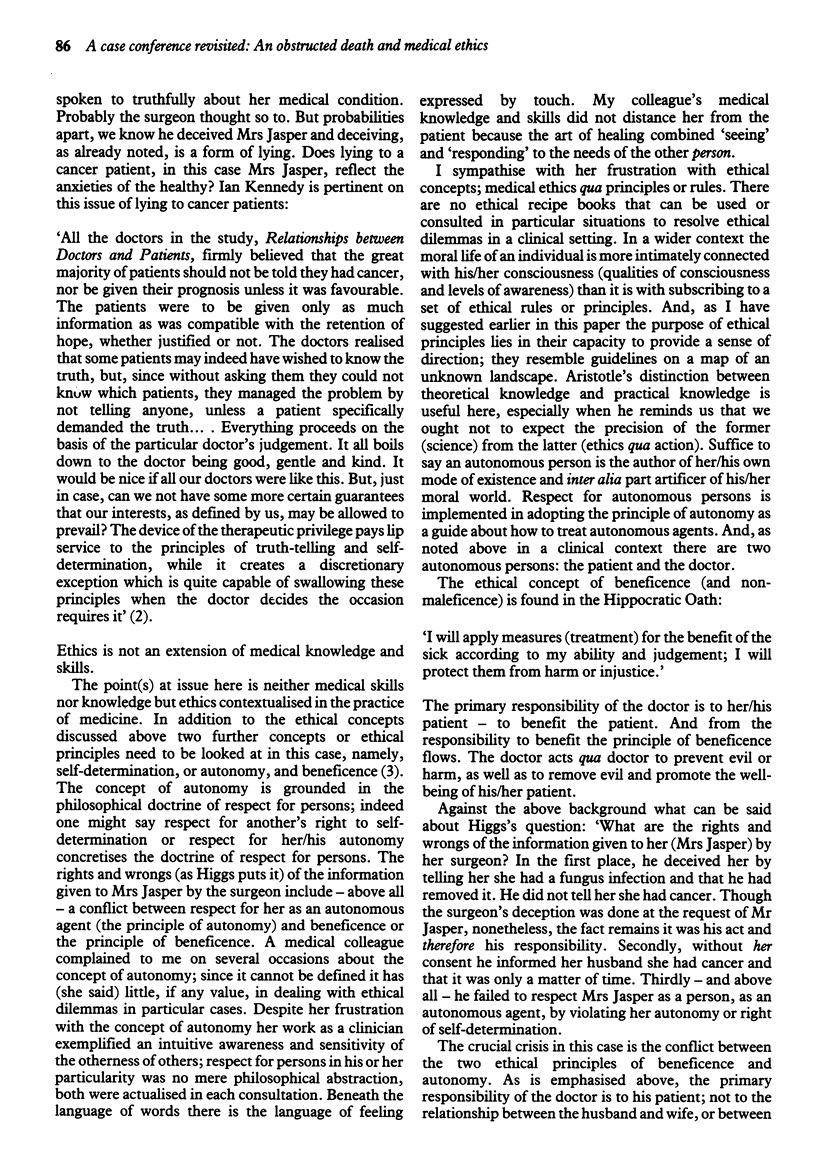
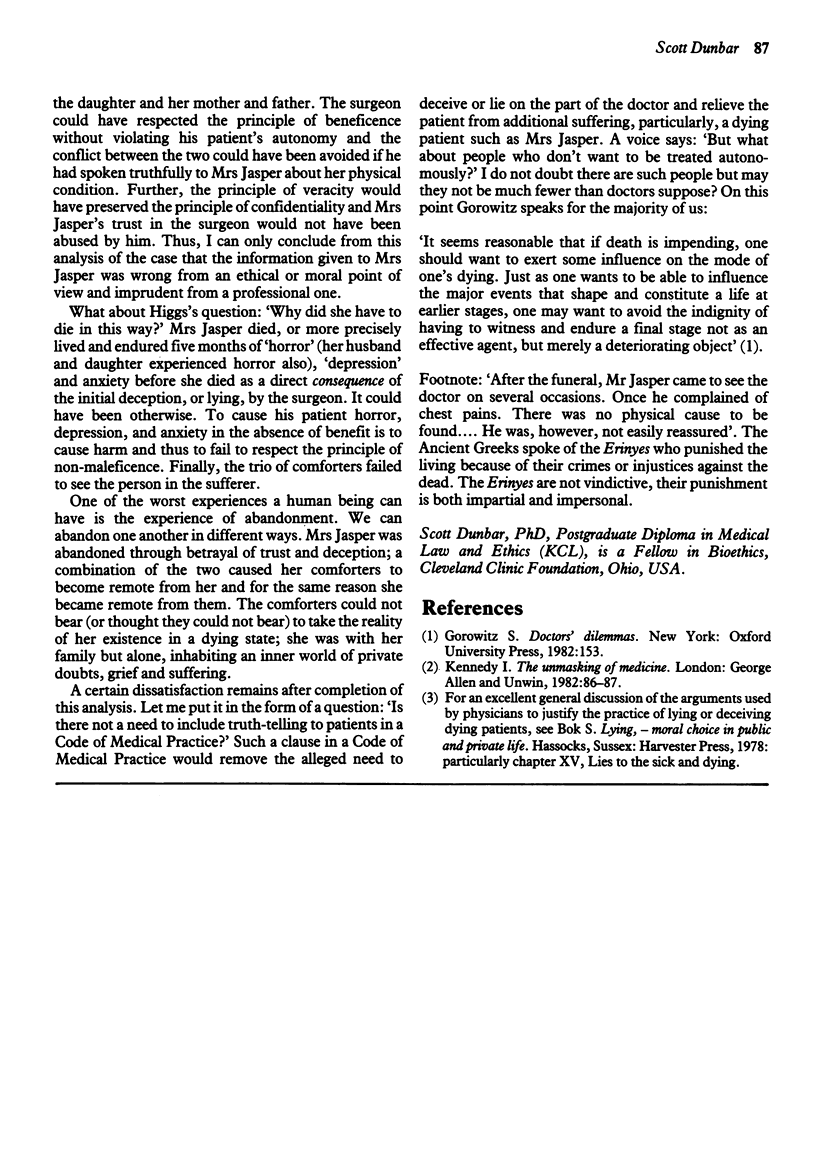
Selected References
These references are in PubMed. This may not be the complete list of references from this article.
- Higgs R. Truth at the last--a case of obstructed death? J Med Ethics. 1982 Mar;8(1):48–50. doi: 10.1136/jme.8.1.48. [DOI] [PMC free article] [PubMed] [Google Scholar]


